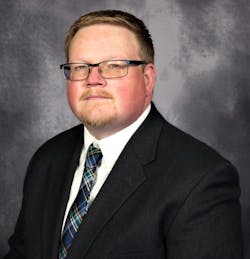Utilities’ Relationship With DER? It’s Complicated
If they had to label their relationship with distributed energy resources (DER), electric utilities would announce on social media, “It’s complicated.” Like real relationships, the one with DER involves some give and take. It can stress the grid.
Enter advanced distribution management systems (ADMS) and distributed energy resource management systems (DERMS), platforms that can integrate utility customers’ DERs into the distribution grid. When customers become electric power generators that supply power to the grid, these platforms can manage and monitor the process to help stabilize grid operations.
“I believe a DERMS platform will likely be integrated at every major utility as interconnecting DERs and load management become increasingly important,” said Christopher Gubala, principal project manager in the smart grid and technology department at Commonwealth Edison (ComEd), the largest electric utility in Illinois with some 4 million customers.
ComEd has had a successful DERMS demonstration in service since April 2022, Gubala said. Instead of implementing traditional system upgrades, the utility developed and deployed DERMS solutions to interface with customer site controllers. This interface allows ComEd to protect network sub-transmission system assets and to mitigate reverse power flow, high voltage and voltage fluctuations related to solar photovoltaic (PV) and battery energy storage system (BESS) operations.
Gubala will share more during a Sept. 13 panel session called “Utilities Talk DER Integration,” part of the T&D World Live Conference in Sacramento, California. Joining him will be his ComEd colleague Peter Kiczula, principal business program manager; and Michael Witter, manager of real-time systems at Sacramento Municipal Utility District (SMUD). Katarina Miletijev, manager of distribution operations engineering at SMUD, is session chair.
Gubala and Kiczula will share DERMS deployment challenges ComEd overcame, such as system integrations, and current challenges, such as expanded use of existing equipment to serve DERMS.
As lead project manager for ComEd’s DERMS demonstration, Gubala manages 8.8 MW on five solar interconnections. He also is the lead for ComEd’s future DERMS deployments and a partner in the utility’s DERMS expansion strategy conversations.
Kiczula’s experience includes developing the DERMS roadmap, aligning DERMS architecture with the utility’s IT business model and evaluating enhancements and procedures for DERMS expansion.
“I plan to discuss the current and upcoming DERMS demonstrations ComEd is pursuing — mainly the motivation for DERMS and how we’re using it to optimize our current infrastructure while incorporating additional DER on our system,” Kiczula said. “I will discuss two different use cases and some of the next steps we’re focusing on as we move to offer this more widely to our customers.”
SMUD’s Witter will explain how SMUD is completing its DERMS implementation in two parts.
The first part allowed SMUD to gain visibility and control of DERs through telemetry, metering, real-time estimation and forecasting DER production and impacts to system conditions.
The second part will give SMUD the ability to schedule DERs, or smart inverter modes, to improve electrical performance by dispatching DERs to solve grid conditions in real time. SMUD will include customer cited DERs as part of the solutions.
The relationship between utilities and DER likely will remain complicated, but ADMS and DERMS offer better communication among parties.
The T&D World Live Conference will be Sept. 12-14 in Sacramento. Registration, conference and event details are available on the conference website.
Kristen Wright is a journalist with more than 20 years’ experience covering global utilities, petroleum and policy. She is chief strategist at Kristen Wright Strategic Communications. Reach her at [email protected] and wrightkristenm on LinkedIn.
About the Author
Kristen Wright
Kristen Wright is an energy journalist with more than 20 years’ experience covering global utilities, petroleum and policy. In 2024, she was appointed as an Energy Innovation Fellow with the U.S. Department of Energy. Reach her at [email protected] and wrightkristenm on LinkedIn. Opinions expressed here are personal and not representative of the positions or policies of the EIF Program, Department of Energy, ORISE or the U.S. government.

